I wouldn’t want anyone to think that I am an expert when it comes to Medieval Ships in wargaming. However, I do have some experience of boat building. My model ship building almost predates my involvement in wargaming and in my younger years, I was a competent sailor of Marblehead yachts and a member of the Gosport model boat club. In an effort to improve my knowledge on the topic, I do spend my lunchtimes perusing the internet searching for information and it would seem to me that there is much that we don’t know about the development of ships in the Medieval period.

I found this piece to be quite interesting:
At the beginning of the 15th century the big seagoing sailing-ship had one mast and one sail. Fifty years later she had three masts and five or six sails. Unfortunately this great change comes just at a time when we are very badly off for pictures or descriptions of ships. English inventories of 1410-12 have been published and these give little light on the first stage of the change, but after that comes darkness. Other inventories of about 1425 are known to exist, but they have been not yet copied and printed.
The documents of 1410-12 show that one ship in the English Royal Navy – and only one- had more than one mast; she had “I mast magn.” and “I mast parv.” – in other words, one big mast and one small mast. The latter may have been in the top as a topmast. We are not told which, but the reference is very important as being the first evidence of a second mast in Northern waters.
It must be noted that this small mast was found in a ship called the “carake” and a carrack was by origin a Mediterranean type…
The name ‘carrack’ was not new. It occurs in Spanish documents before the end of 13th century, and there is an account of the capture by Spanish galleys in 1359 of a large Venetian carrack; but it is in the 15-th century that the carrack was in her prime, and we see her then as a three masted ship developed by the southern nations from the Northern one-master and then taken up all over Europe. Genoa was the chief port…
There were Venetian carracks as well, but usually the vessels from Venice were galleys,… designed and equipped for long voyages and cargo-carrying.
… From the book : A Short History of the Sailing Ship by Romola Anderson , R.C. Anderson
Some of the information above seems to be out of date. we know that the Grace Dieu, Henry V’s warship was launched in 1418 and she was a massive ship ( literally a Great Ship) with three masts but it serves to show what little detail that we have of vessels in this period. We also know that Grace dieu had a number of escorts – smaller ships of similar design, or Carracks.
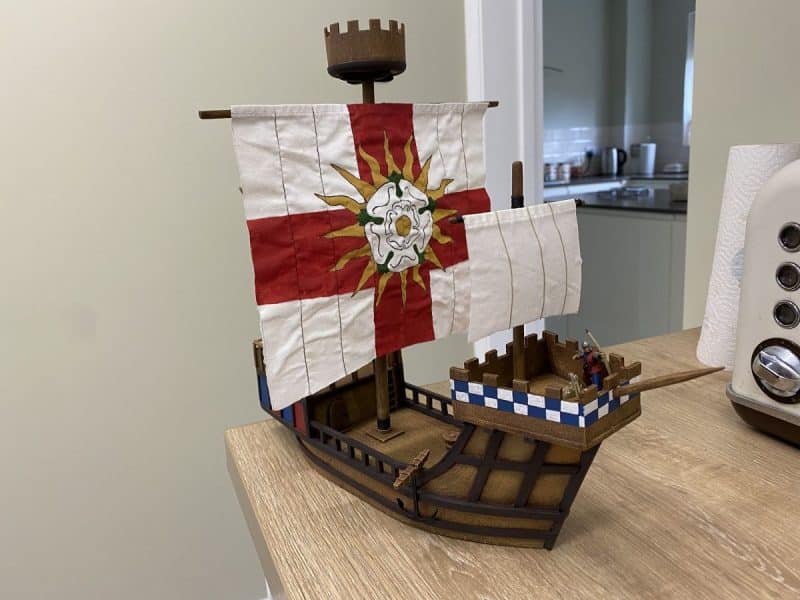
So when I was very kindly sent a kit of a medieval cog by George Antioch, a follower of the facebook ‘Never mind the Billhooks’ page, my first thought was to make an escort for my version of a Great ship, ‘the Sun In Glory’ ( shown above, cruising past the toaster!)
George had designed his kit as a cog but I felt that it was sleek enough to convert to a carrack, by adding the extra masts and building up the two castles. The first task was to assemble the hull.
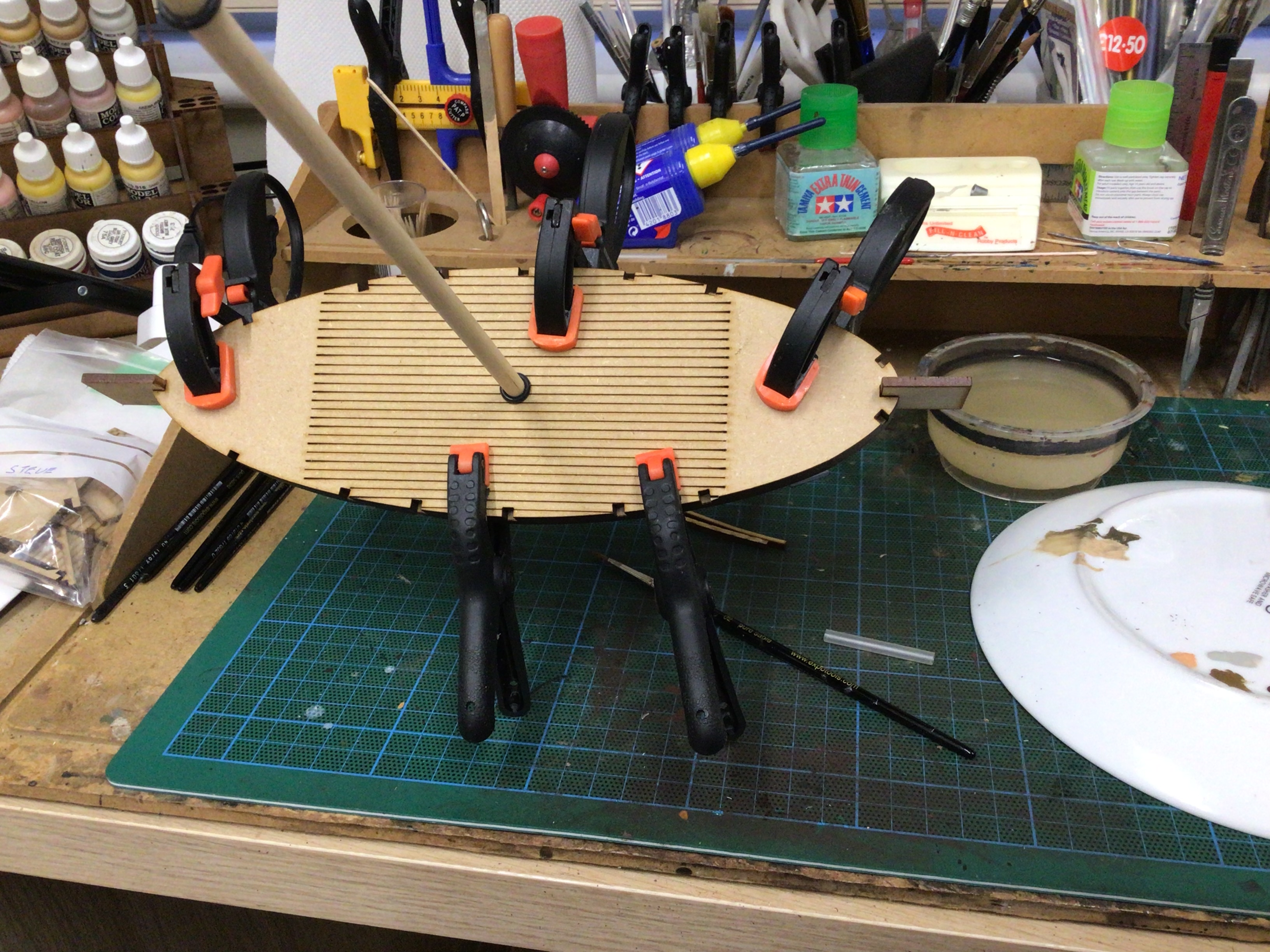
Using the mast to ensure everything was aligned and the temporary square lugs, fore and aft, I used PVA to hold the hull pieces together and clamped it whilst it dried.

With the hull assembled and the decks of the fore and stern castles in place, I thought that I would add some planking to the card formers that made up the hull. I was too lazy to cut out the individual strips of paper and came up with the idea of using my paper shredder to produce instant planking by running a sheet of good quality paper through it! It was an easy job to apply the paper with PVA to get the effect of planking on the hull.
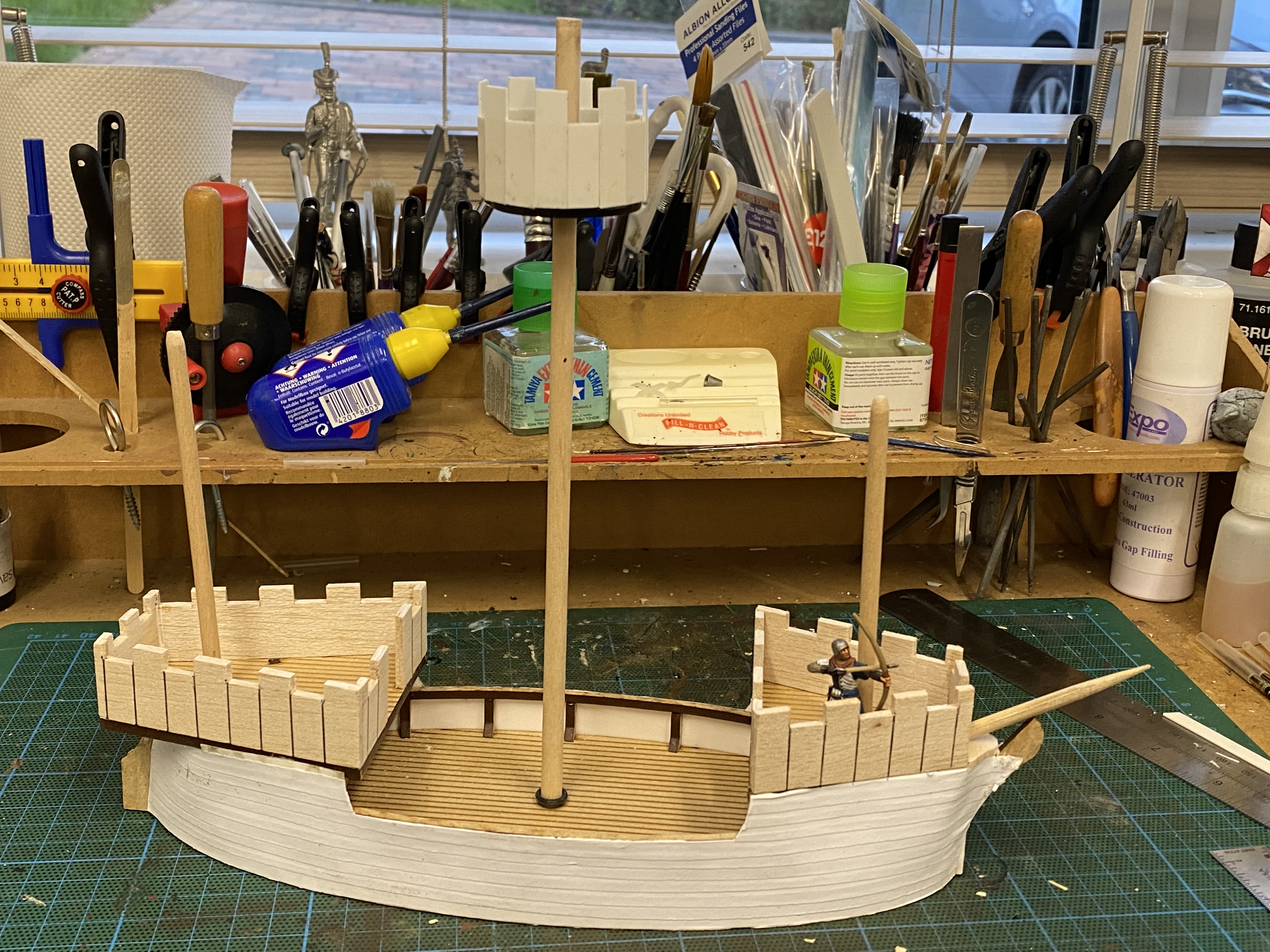
Once the hull was dry, I added the stern castle and forecastle using balsa – I used the card pieces supplied by George as a template but wanted them to be a bit taller than those from George. You can see that I’ve also added the two extra masts and a bowsprit. The masts are of doweling, the bowsprit is a ‘posh’ barbecue skewer, so I didn’t even have to sharpen it! The fighting top is made from two round 40mm bases with evergreen strip ( pack 159,) cut to size and glued into place.
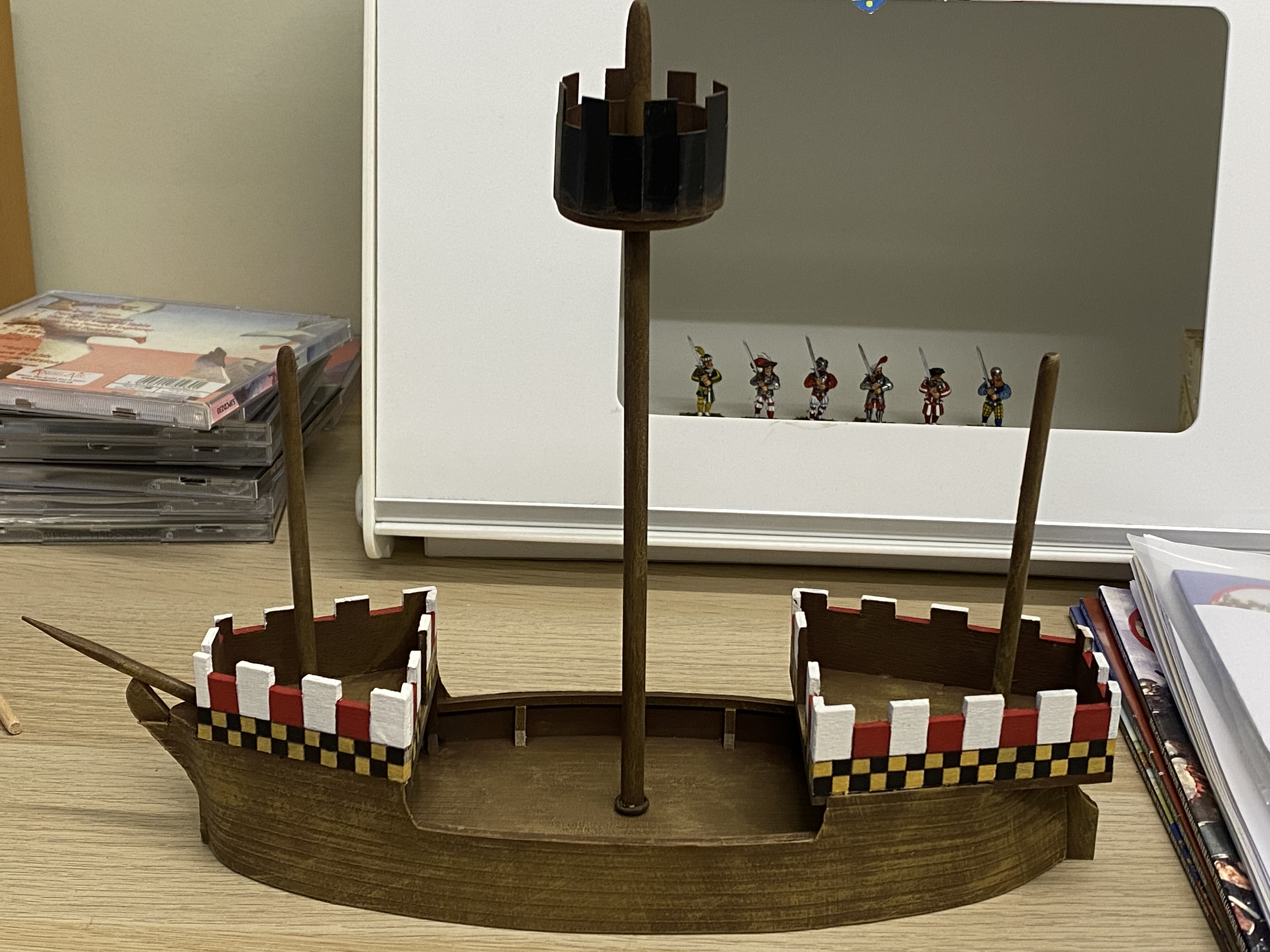
The next stage was to paint everything. I used my standard process of a mixture of browns, finishing with a highlight of yellow ochre. I’ve added the links to my earlier blogs so that you can see this in detail if you need to. The checkerboard pattern was marked out using a black biro. With hindsight a pencil would have been better as correcting mistakes was difficult. The effect is OK but don’t look too closely! Yellow is a bugger to paint at the best of times!
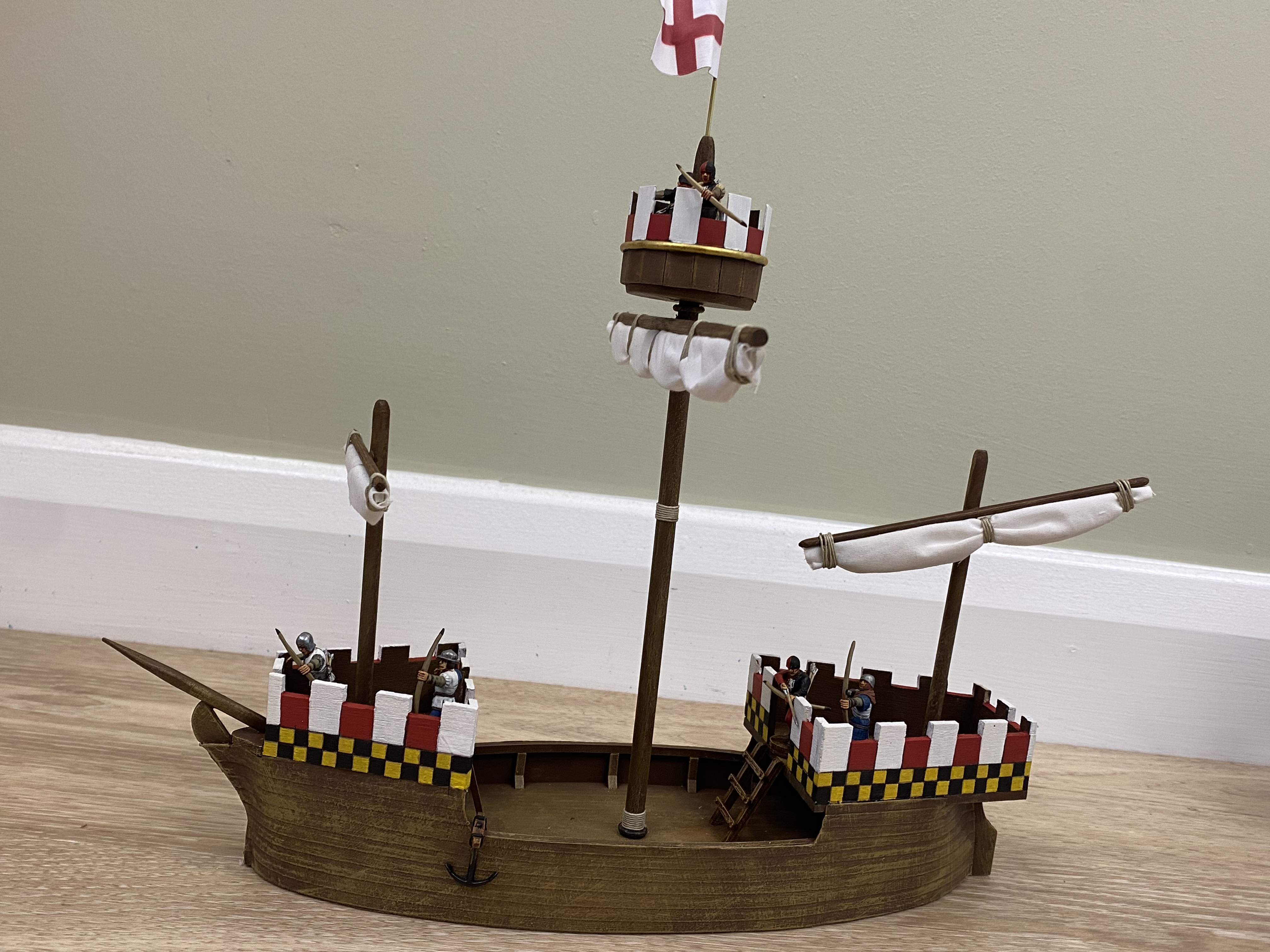
Once I was happy with the painting, I added the spars and furled sails, ladders and anchor. I also modified the fighting top by adding a band of half round evergreen strip ( pack 243). It’s not as straight as it should be, the blooming clamps slipped as it was drying but I was too impatient to correct this and it just about passes!
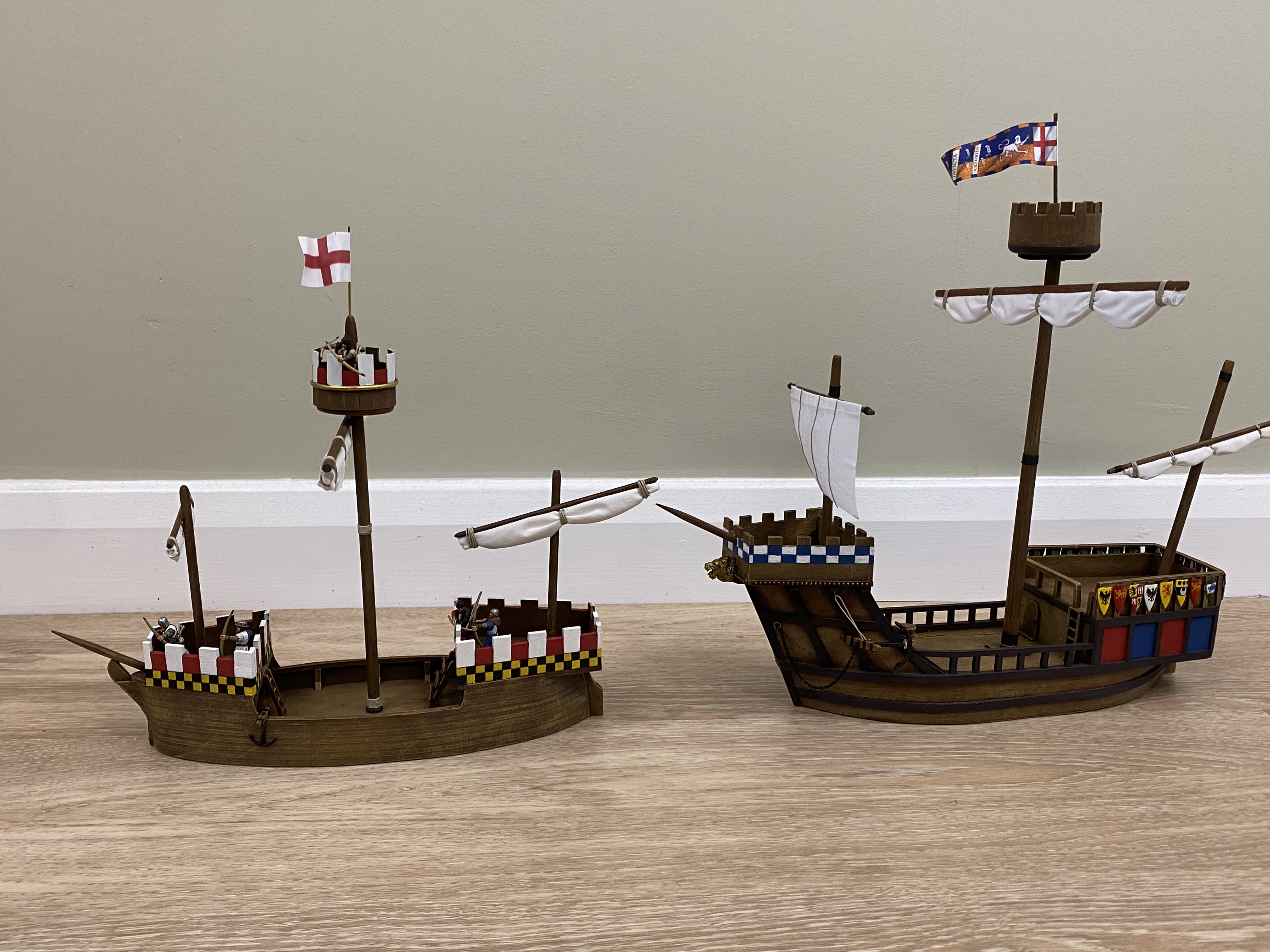
Here’s the ‘George’ accompanying the ‘Sun in Splendour’ on the floor of my wargames room! I now have quite a fleet to fight using the new ‘Never Mind The Boathooks’ rules set – watch out for my next battle report!
Here are some useful links to my previous blog articles – there are others but these, I think are the most useful:
You can get hold of the rules for ‘Never Mind The Boathooks’ by purchasing issue 426 of Wargames Illustrated. As well as a free supplement with the rules, there are some useful boat building articles! It is available while stocks last here:
NEVER MIND THE BOOKHOOKS ISSUE
THE COMMERCIAL BIT
I hope that you all enjoy your hobby as much as I do – our web site will have much of what you need! Click here to see our shop.
We also have a category devoted to Never Mind the Bill Hooks, updated to include the new Sarissa Models for Boathooks!:
To see our range of Naval accessories, click here:
To see our range of glues, click here:
You can find all the Vallejo Model colour paints here. If you don’t want to browse, just enter the paint number into the shop search bar;
You can see our range of Evergreen strip here:
Happy Modelling!
